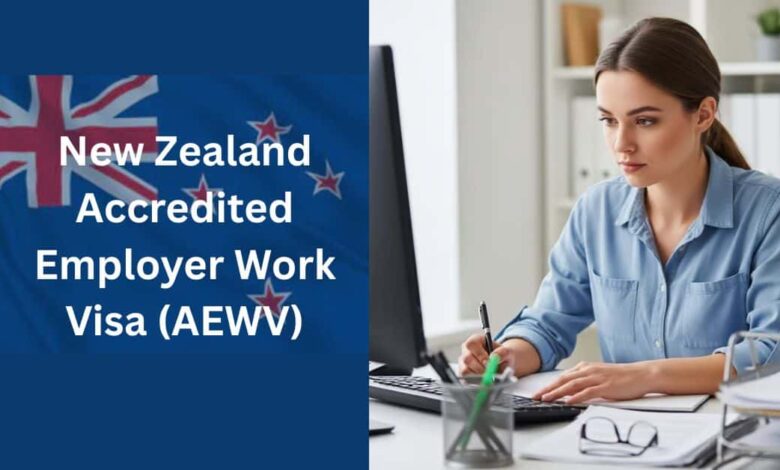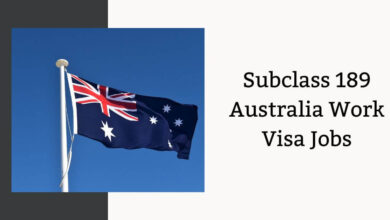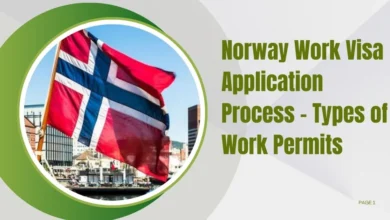New Zealand Accredited Employer Work Visa (AEWV) 2025

If you’ve been dreaming about working in New Zealand, some big updates are on the horizon that make the process smoother and more welcoming for skilled and lower-skilled workers alike. Starting soon, applicants for Accredited Employer Work Visas (AEWV) and Silver Pathway Work Visas (SPWV) will no longer be bound by the median wage requirement meaning employers must now pay at least the minimum wage, which rises to NZD $23.50 per hour.
Even better, the required work experience drops from three years to two, so talented people like you can start your Kiwi adventure sooner. Low-skilled workers in ANZSCO Level 4 and 5 roles can now enjoy three-year visas, giving more stability and security.
Details of New Zealand Accredited Employer Work Visa (AEWV) 2025:
- No Median Wage: Only minimum wage applies.
- Less Experience: 2 years instead of 3.
- Longer Visas: 3 years for Level 4 and 5 roles.
- Higher Family Support Threshold: NZD $55,844 annually.
- Work Rights on Interim Visas: Increased job security during visa processing.
Removal of Median Wage Requirement:
- The AEWV and SPWV holders will no longer be subject to the median wage criterion.
- The minimum wage in New Zealand, which will rise to NZD $23.50 per hour must be paid by employers.
- The market rate of compensation for migrant workers must still be the same as that of their counterparts in New Zealand.
- There would be no more sector agreements that excused firms from paying the median wage. Agreements providing residence pathways, however, will not be altered, nor will the wage criteria.
Impact: Apart from the minimum wage, jobs that were formerly covered by sector agreements will no longer have any quotas, restrictions on the length of a visa, or wage thresholds.
Reduction in Work Experience Requirement:
- For AEWV applicants, the required work experience will drop from three years to two years.
- Candidates must submit supporting documentation, and employers must confirm that migrant workers meet this requirement.
Impact: By reducing the possibility of exploitation, this modification guarantees that skilled people can join the workforce sooner.
Declaration-Based Ministry of Social Development (MSD) Engagement:
- Employers simply need to disclose that they have conducted interviews with qualified applicants for lower-skilled positions (ANZSCO skill levels 4 and 5) that they have advertised with MSD.
- Evidence of their involvement, which may be asked for during hiring procedures, must be kept on file by employers.
Impact: This preserves equitable recruiting procedures while streamlining the employment process.
Read Also: Working in New Zealand on Tourist/Visit Visa
Extended Visa Duration for ANZSCO Level 4 and 5 Workers:
In accordance with their maximum continuous stay, AEWV holders in ANZSCO Level 4 and 5 vocations will now be eligible for a 3-year visa.
Impact: This modification gives low-skilled migrant workers more stability and job security.
Increased Income Threshold for Supporting Dependent Children:
- From NZD $43,322.76 to NZD $55,844 per year, the income threshold for supporting dependent children will increase.
- Based on a 40-hour workday, this amount is equivalent to 80% of the median pay and will be revised yearly.
- Children who have a visa or are applying for one before March 10, 2025, will still be subject to the prior threshold.
Impact: In order to provide for their children, migrants will have to earn more money.
Recognition of Higher ANZSCO Skill Levels:
As a result of the switch to the National Occupation List (NOL), starting on March 10, 2025, the following occupations will be designated as ANZSCO Skill Level 3:
Reclassified Occupations:
- Pet Groomer (361113)
- Cook (351411)
- Kennel Hand (361115)
- Scaffolder (821712)
- Fitness Instructor (452111)
- Slaughterer (831212)
- Nanny (421113)
Furthermore, if employers need either three years of work experience or a Level 4 qualification, four additional occupations will be classified as Skill Level 3:
- Excavator Operator (721214)
- Agricultural and Horticultural Mobile Plant Operator (721111)
- Forklift Driver (721311)
- Mobile Plant Operators (not elsewhere classified) (721999)
Impact: Skilled workers in critical roles can now access higher-skilled visa pathways.
Interim Visa Work Rights Updates:
There will be new rules for temporary visa holders who are awaiting AEWV rulings:
- Work Rights: While on an interim visa, applicants who are switching from any type of work visa or a student visa that permits employment are permitted to work.
- Continuous Stay: Under AEWV and work-to-residence eligibility, time spent on an interim visa will be counted toward the overall amount of time spent continuously.
Impact: This guarantees job stability while the visa application is being processed.
Median Wage Changes:
- Supporting a spouse will now require a wage requirement of NZD $26.85 per hour.
- In order to match the median wage, the income criterion for Parent Category sponsors will rise to NZD $33.56 per hour.
Impact: Higher financial requirements will apply to migrants who are helping family members.
Conclusion:
New Zealand’s updated work visa rules make it easier for skilled and lower-skilled workers to join the workforce with less experience and longer visas. Families benefit from higher income thresholds, while interim visa holders gain job security during processing. Overall, these changes create a fairer, more stable, and welcoming pathway for migrants.
Frequently Asked Questions:
Will the new changes affect existing AEWV holders?
No, current AEWV holders will keep working in accordance with their existing visa terms, including pay scales. Future applications, however, will adhere to the revised guidelines.
What are the new rules for work rights on interim visas?
Temporary visa holders will be permitted to work under interim visa terms while they await an AEWV judgment. While their application is being reviewed, this guarantees ongoing job stability.




